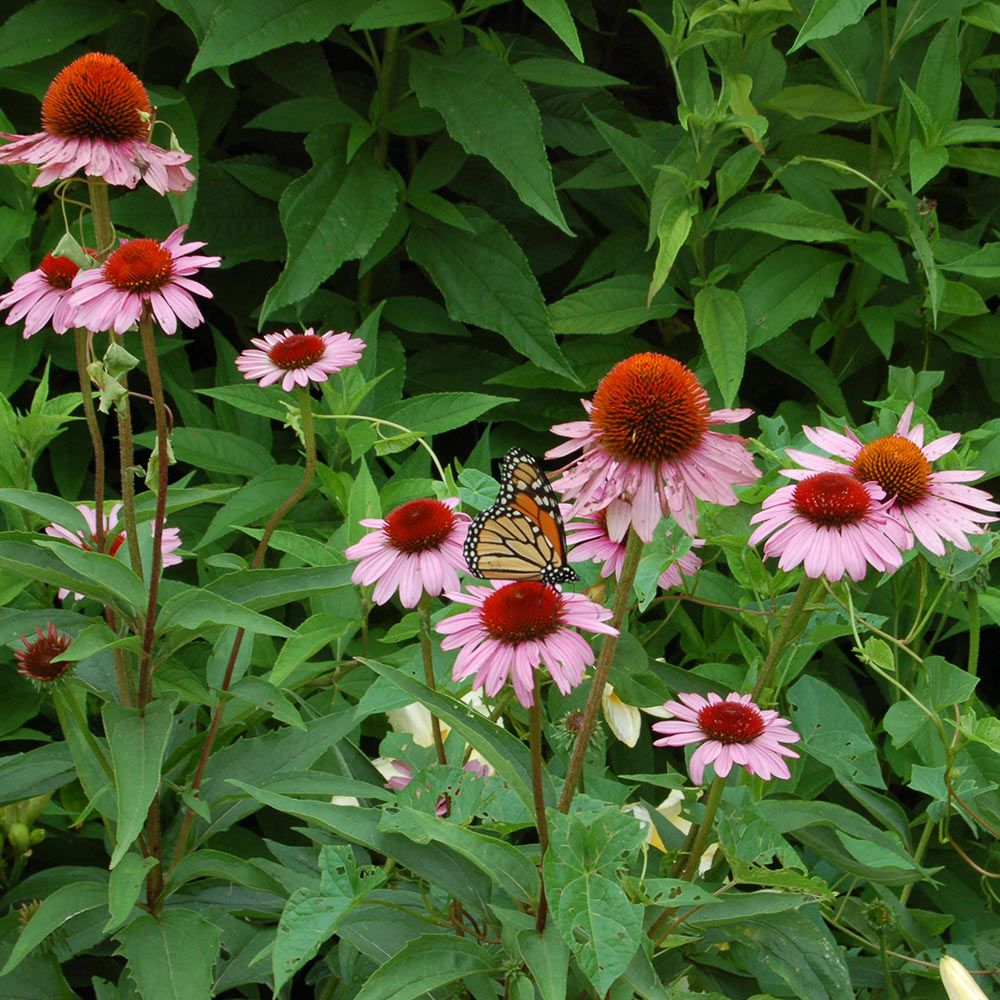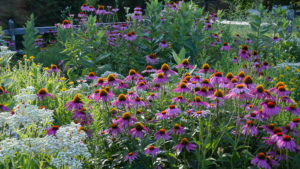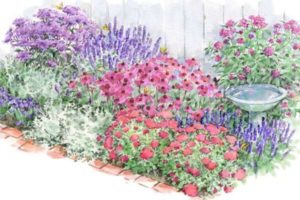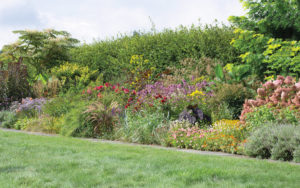You can attract a variety of butterflies to your garden by offering some of the blossoms they love best and by incorporating accessories that provide support. The plants highlighted here all produce nectar-rich flowers that are vital sources of food for pollinators, and all offer beauty and color for human admirers. Asclepias (Milkweed), Buddleia (Butterfly Bush), Liatris, and Lantana are among the best plants for butterflies.
1. Liatris ligulistylis
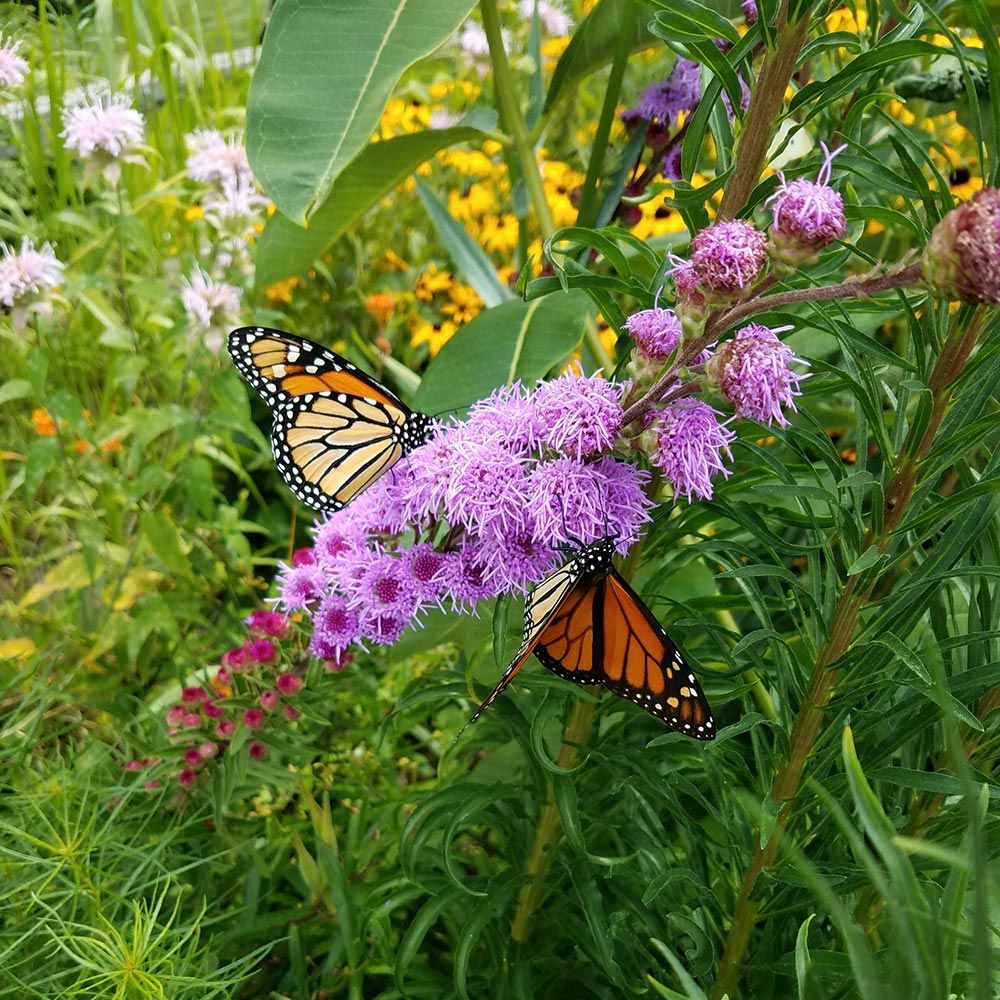
In our gardens, Liatris ligulistylis is a butterfly magnet during its long run of summer bloom (July to September) and a feeding station for goldfinches come fall. It is particularly popular with Monarch butterflies, and you can always spot the plant in the garden because it’s where you see a lot of orange-and-black wings fluttering.
2. Liatris spicata ‘Kobold’
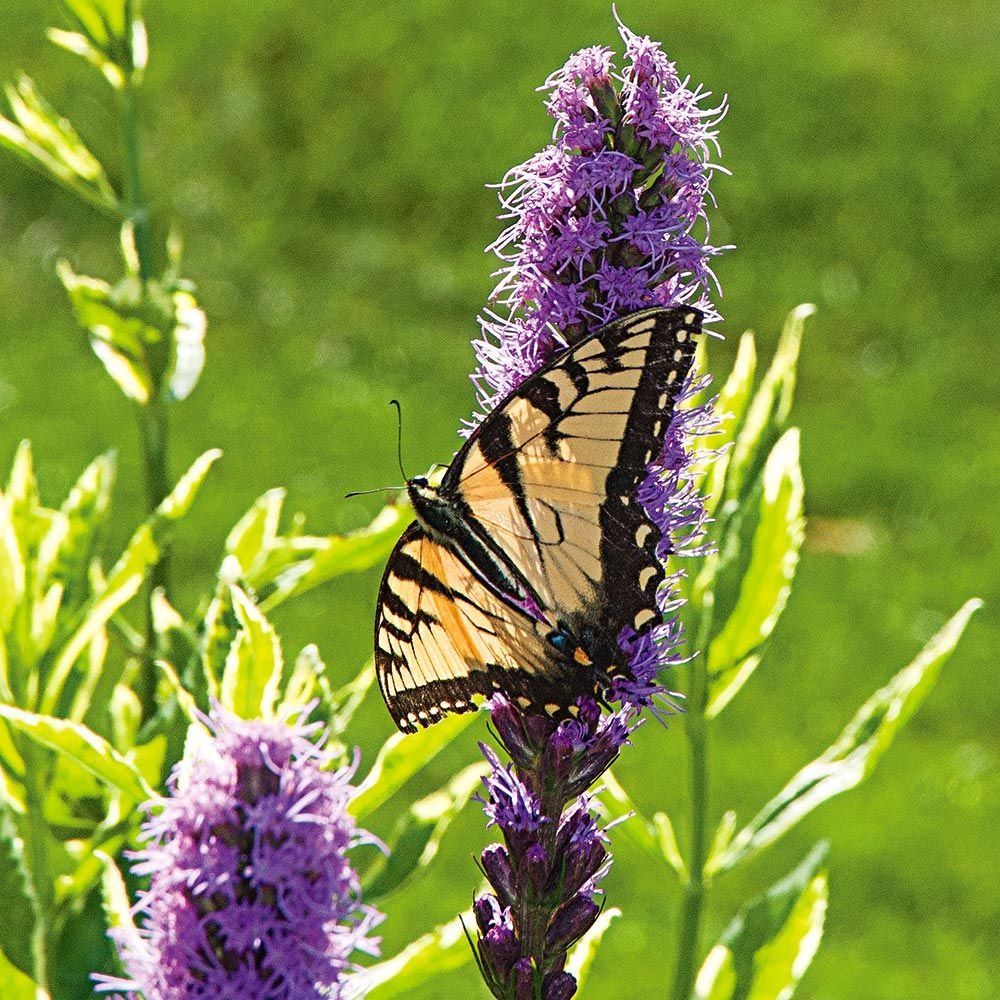
A compact selection of the prairie native that’s commonly called Blazing Star, Liatris spicata ‘Kobold’ is a butterfly favorite. These plants thrive in full sun or partial shade and well-drained, even dry, soil, but they struggle in the desert Southwest. Best planted in groups, they will create a lot of pollinator traffic at the edge of the border.
3. Phlox paniculata Candy Store® Coral Crème Drop
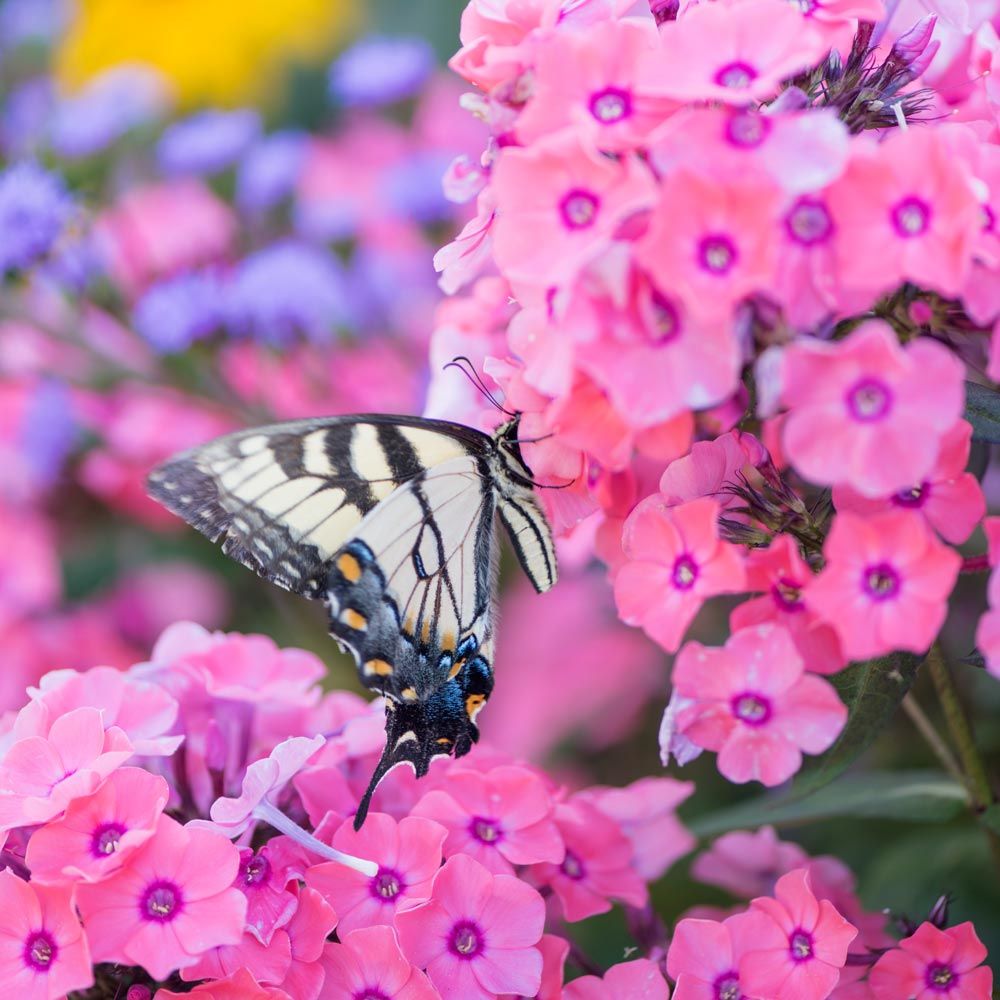
Phlox is an important genus of valuable garden plants that includes reliable and colorful species that bloom both early and late, in sun and shade, and in a range of rich colors that is equaled by few other genera. The hardy Candy Store® series was developed in the Netherlands where it was bred specifically for a compact habit, attractive leaf and flower coloration, and good disease resistance. Coral Crème Drop offers rosy coral petals highlighted with white and a deep-pink eye. Its long-blooming and sweetly fragrant flower clusters are closely packed on compact, well-branched plants.
4. Phlox paniculata ‘Jeana’
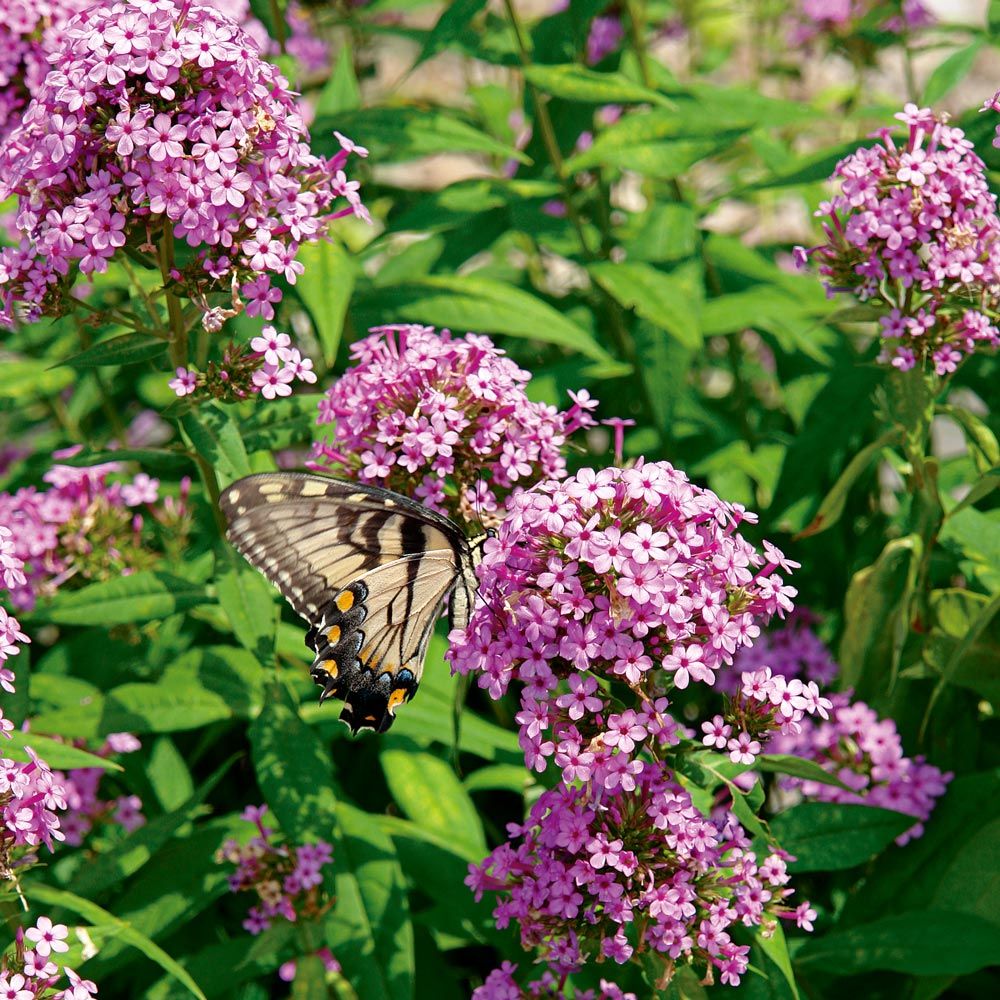
Phlox paniculata ‘Jeana’ is a vigorous grower that produces showy, dense heads of lavender-pink flowers that are adored by butterflies. This variety has proven to be extraordinarily mildew resistant, and it blooms all summer into fall. ‘Jeana’ was included in an extensive Phlox trial at Mt. Cuba Center, where she was deemed “without a doubt, the best-performing phlox,” and the one that attracted more butterflies than any other variety.
5. Echinacea purpurea ‘Magnus’
Butterflies love Echinacea (commonly called Coneflower), a North American genus in the Daisy family that features big, bright flowers that appear in late June and keep coming into September. The popular Echinacea purpurea ‘Magnus’ variety features petals that are an especially vibrant carmine-rose shade and are held almost horizontally, which makes for a more open face than the shuttlecock shape of the species. Butterflies and other pollinators feed at the large cones, and in autumn, the seed heads attract birds including goldfinches.
6. Buddleia davidii Buzz™ Ivory
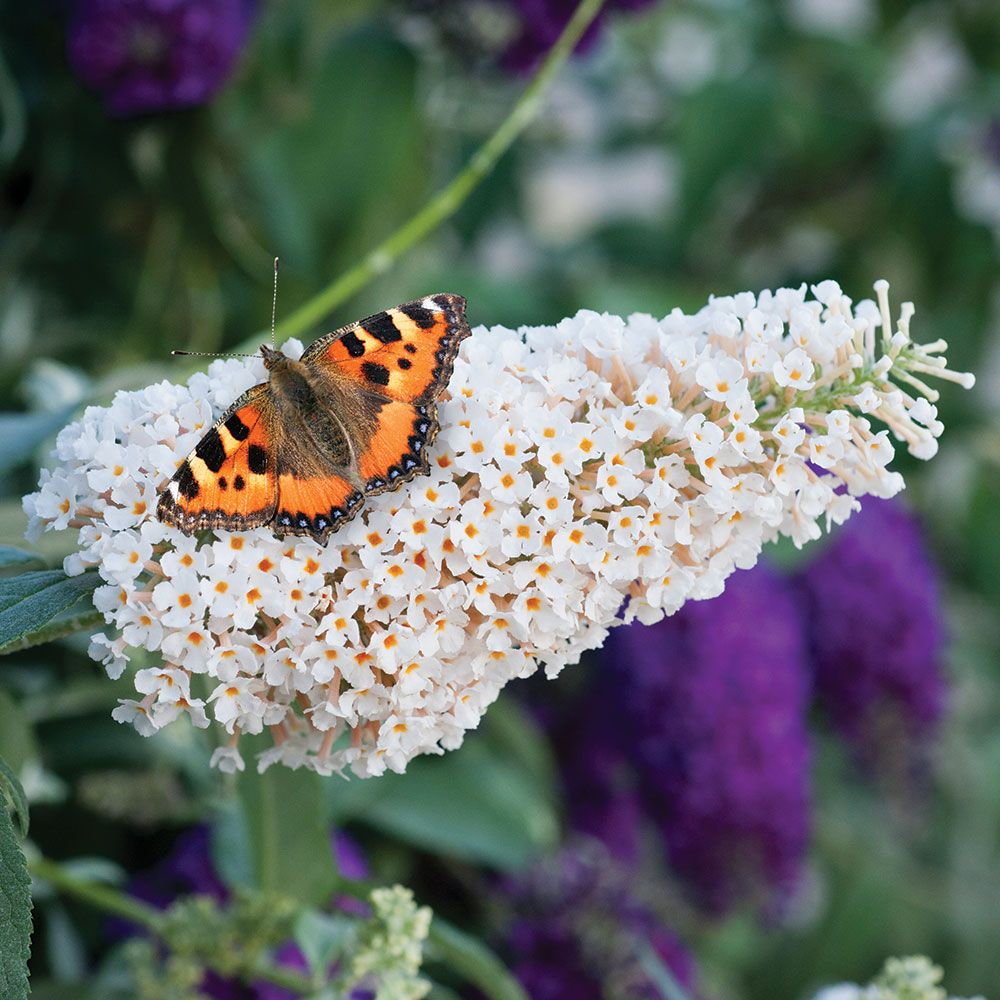
Sized perfectly for large pots or smaller spaces in the garden, compact Buddleia davidii Buzz™ Ivory produces lovely panicles of white blossoms that attract a wide variety of pollinators. Deadhead this 4′ Butterfly Bush to keep the blossoms coming from summer to fall.
7. Asclepias tuberosa Gay Butterflies Mix
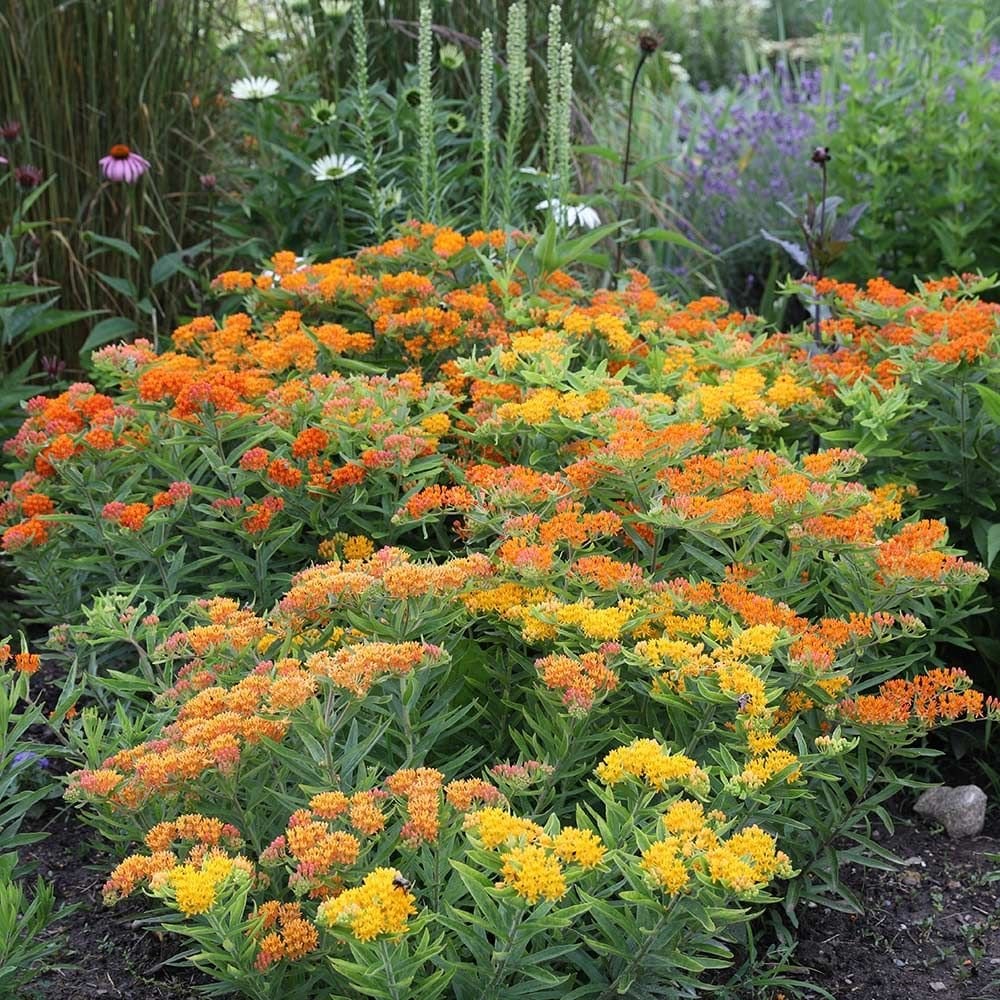
Asclepias, commonly called Milkweed, is the essential plant for Monarch butterflies, providing nourishment through all their life stages. Our Asclepias Gay Butterflies Mix not only feeds Monarchs and other beneficial insects, it offers boldly colored, ornamental blooms in shades of fiery red, orange, and yellow in June and July. We sell it as a collection of 3 plants to provide a sampling of the full color range.
8. Zinnia ‘Zowie! Yellow Flame’
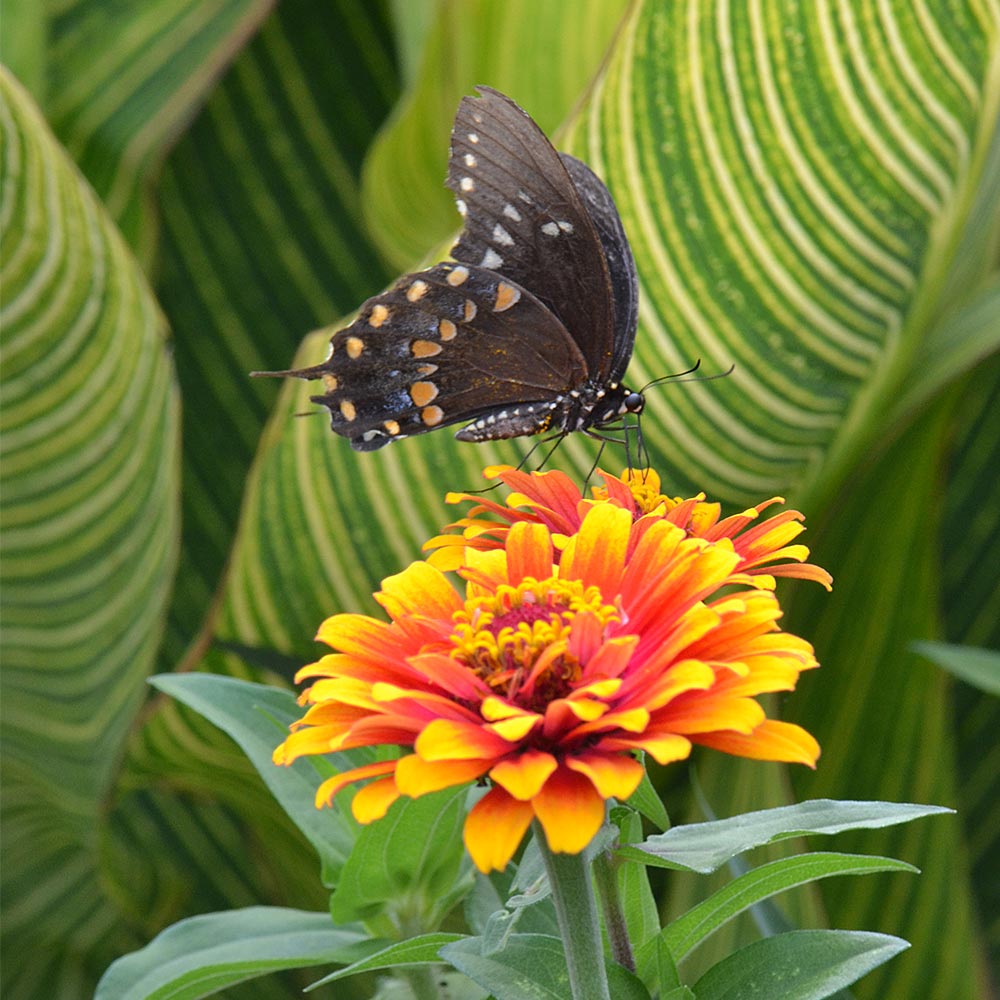
Nothing ignites a bed or mixed border like a mass planting of Zinnia ‘Zowie! Yellow Flame.’ Its brilliant, yellow-tipped petals start off magenta-pink then turn to scarlet-rose around a dramatic red-and-yellow cone. An annual in cooler climates such as ours, the plant is a hit with gardeners and pollinators alike. Deadhead the spent blossoms regularly, and the flowers will keep coming over a long season.

